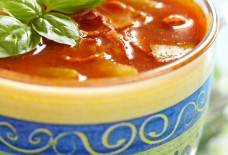Ghassan Kanafani: The Novelist and Political Activist
By: Lindsey Penn/Arab America Contributing Writer
Ghassan Kanafani, one of the most well-known Palestinian writers, is famous for his many stories about Palestinian life after the Nakba. His books are globally famous, and many have been translated into multiple languages. Kanafani is one of the founders of the “resistance literature” genre, which speaks about socio-political activism against the commanding ideologies.
Early Life
Ghassan Kanafani was born on April 8, 1936, in Acre, Palestine. His father, a lawyer, actively opposed the British occupation of Palestine and their support of Jewish immigration to Palestine. Throughout his childhood, the British arrested Kanafani’s father for his support of the national movement against the British occupation. As a child, Ghassan Kanafani was diagnosed with Type 1 diabetes. Kanafani attended a French missionary school located in Jaffa, until 1948 when the Nakba forced his family (his mother, father, two sisters, and four brothers) to flee Palestine. They first went to Lebanon, but eventually settled in Damascus, Syria.
Life as a Refugee
Once in Syria, Kanafani continued his schooling in public schools. In 1953, he began to teach art classes in schools in Damascus with the United Nations Relief and Works Agency (UNRWA) and began writing short stories. While there, he met George Habash, who introduced him to the Movement of Arab Nationalists. Kanafani graduated from high school in 1955 and began college at the University of Damascus, where he studied Arab Literature. His thesis focused on race and religion specifically in Zionist literature. The University expelled him before completing his degree because of his involvement with the Movement of Arab Nationalists.
Career
In 1955, Kanafani moved to Kuwait and continued teaching. He also became the editor for the Movement of Arab Nationalists’ newspaper, al-Ra’i (The Opinion). At this time, Marxism became one of Kanafani’s interests. He wrote stories but did not publish any yet. In 1960, Habash asked Kanafani to move to Beirut to write for al-Huriyya (Freedom), another newspaper for the Movement of Arab Nationalists. He married Anni Høver, a leftist activist from Denmark, in 1961. They had a son and a daughter, born in 1962 and 1966, respectively. In 1962, Kanafani went underground because he didn’t have official papers for living in Lebanon, but came back as the editor-in-chief of al-Muharrir (The Liberator), a progressive newspaper. He also wrote the weekly section “Filastin” or “Palestine”, and published his first short story, The Land of the Sad Oranges, in 1962. He published his first book, Men in the Sun, in 1963.
Men in the Sun (1963)
Men in the Sun is Kanafani’s most well-known book. It follows the stories of three Palestinian refugees who are traveling to Kuwait in the hopes to find work. They begin at the refugee camp in Iraq, making their way through the desert in the truck of a local smuggler. People praise Kanafani for his book’s commentary on government corruption and the passivism or defeatism that many Arabs and Palestinians had accepted. The book changed the political and cultural discussions at the time to question government corruption and why defeatism was so rampant in society. Since its publishing, movies, and plays based on the book have been released. Men in the Sun continues to inspire many young Palestinians and Arabs to be activists in their societies. Many literature courses around the world teach Men in the Sun.
1963 and Forward
Kanafani continued working at al-Muharrir. He received the Lebanese Literature Prize in 1966 for his novella All That is Left to You (1966). After the Six-Day War in 1967, Ghassan Kanafani became the editor-in-chief of al-Anwar (The Illumination) newspaper, and at the same time, helped Habash create the PLFP. Eventually, he became the official spokesman of the PLFP in 1969 and stepping down as the editor of al-Anwar to establish a newspaper for the PLFP called al-Hadaf (The Goal). The next year, he published Return to Haifa and Sa’d’s Mother. Throughout his career, he was arrested multiple times, with the latest being in 1971 for defamation and slander of King Faisal and King Hussein in al-Hadaf. He continued working at al-Hadaf until his death.
Assassination
On July 8, 1972, Kanafani and his niece were killed by a bomb placed in their car by the Israeli Mossad in Beirut, Lebanon. His assassination followed an attack on Lod airport weeks earlier, where three gunmen left twenty-six dead. The PLFP claimed responsibility for the attack.
Since his death, he has inspired Palestinians to strike and protest for their freedom. His life was celebrated with statues in cities and tributes in newspapers. His wife, Anni, started an organization in his name, the Ghassan Kanafani Cultural Foundation. He never finished several of his novels. All of his published works have become classics in resistance literature and energize new generations to act for their freedom.
Here is a list of all of Kanafani’s published works.
Check out Arab America’s blog Here!









